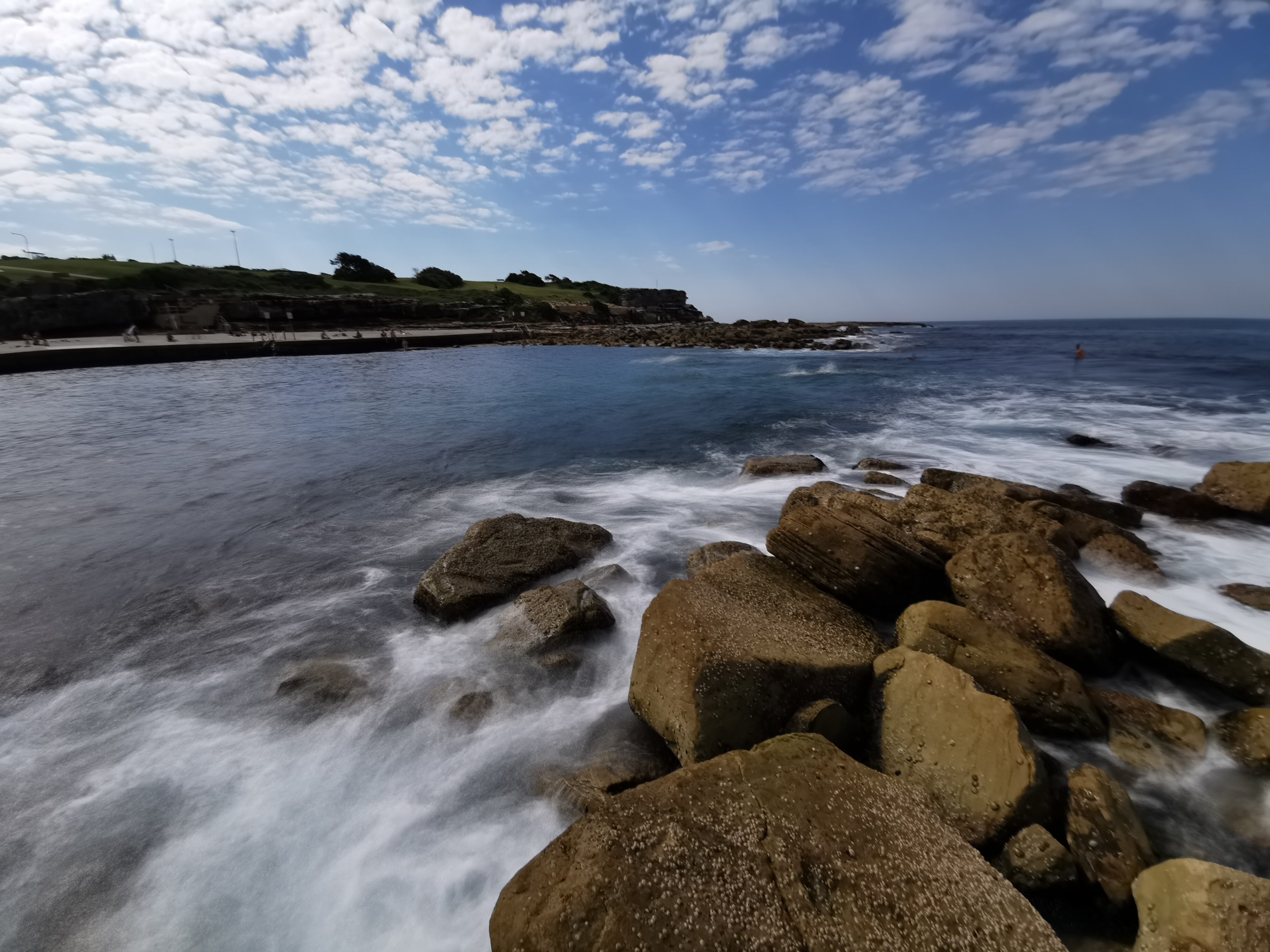
Having already focused on the P30 Pro’s Leica Quad Camera System whilst we were in Paris for the P30 Series launch recently, the phone packs too many modes for one piece (and even one city) so here’s a look at some of the hidden AI photo and video modes that the camera system offers.
NB: .gifs are naturally super low-resolution. Uncompressed, raw versions of all assets featured in this piece are available HERE.
Perhaps the biggest selling point of smartphones these days, aside from the camera, is the battery life. The P30 Pro has a 4200 mAh battery and during our 1 hour and 43 minute shoot in Kirribili with the screen on for the entire time and brightness at 75%, only 11% of battery was used.
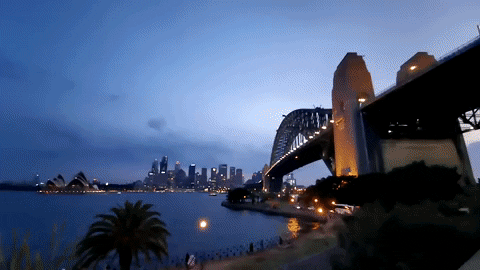
Like most smartphones, the P30 Pro has an inbuilt time-lapse feature in the camera. If done correctly, time-lapses can be a stunning way to showcase and highlight a scene that is blooming with motion and activity. Video quality of timelapses on the P30 Pro is 720p but can appear even less since dynamic range and sharpness has been thoroughly reduced in favor of a small file size. A 15 second timelapse video, which takes roughly 3 minutes to film, is around 15MB in size. With 256GB of in-built storage (which can be expanded by a further 256GB with the specific Huawei nano-memory card), there is plenty of space to instead use your video camera to film for 3 minutes and speed it up with another app, if you’re looking for a more high-def result.
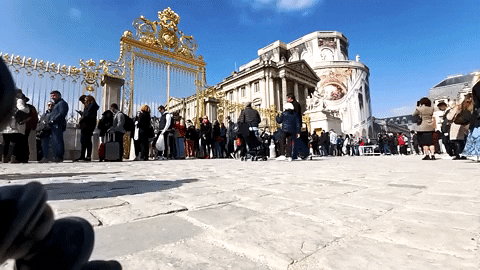
Time-lapse mode incorporates the phones 10x Hybrid Zoom for stunningly clear zoomed in shots. A tip we have is to stick to the modes 5x and 10x Hybrid Zoom buttons at the bottom of the screen as any other variation, even if it’s 4.9x or 9.9x, appears to use digital zoom entirely and not the clear Hybrid Zoom – noise and grain are incredibly strong if you’re not clicked into 5x or 10x exactly. The two shots below were taken a few seconds apart.
Quality reduces when using the UltraWide lens versus 1x, 5x or 10x Hybrid Zoom options, but the opportunity to capture so much of the scene in frame is too desirable.
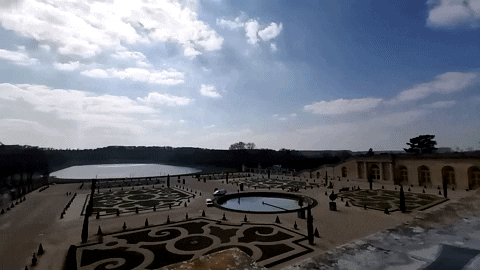
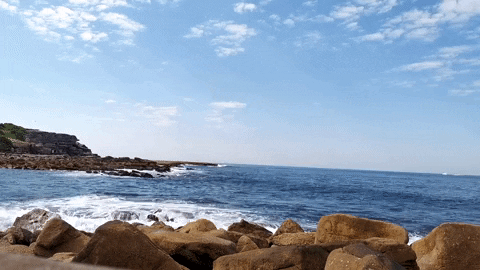
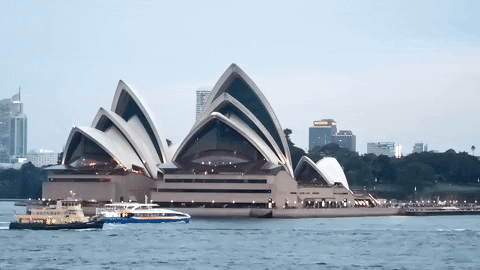
We went into detail about the 50x digital zoom in our other P30 Pro camera feature (which you can read HERE), but here is another example on Sydney Harbour at night.
Like most of the P30’s newest camera features, your photos will go be vastly improved with a tripod. This useful accessory is perhaps most need when using the “Traffic Trails” and new “Silky Water” Light Painting modes. Both modes are essentially long exposure shots that keep the exposure suited for the current scene so complete steadiness is essential if you want a clear shot – investing in a small tripod and camera attachment is worth it.
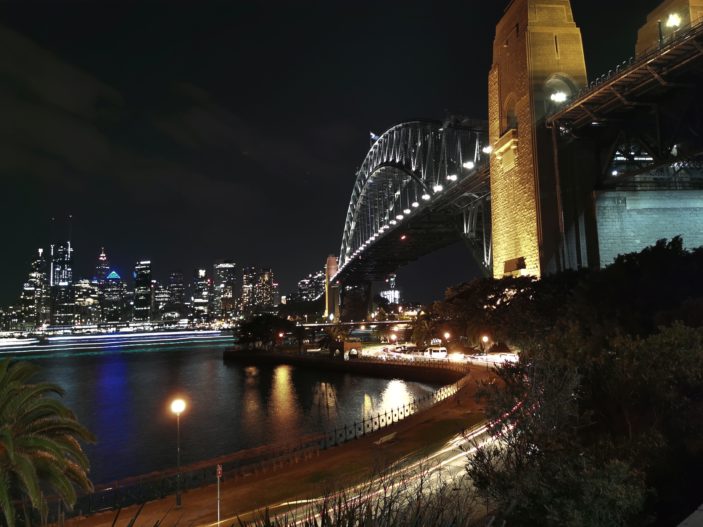
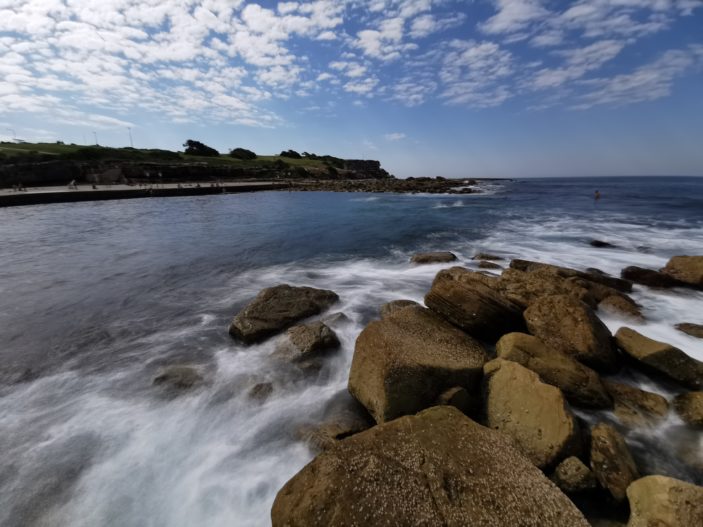
We tried doing our own long exposure shot in Pro Mode whilst at Clovelly Beach to capture the movement of water around the rocks but even at 50 ISO (the phones lowest setting), the shots were becoming blindingly over-exposed at 1/100th. “Silky Water” mode lets you decide how long to shoot for and shows you a preview of the exposing shot so you can stop it whenever you like. It would change depending on the surf conditions and wave strength, but we found 1.5 seconds more than enough since the rocks were breaking the surging water and causing them to airate and whiten rapidly.
The phone also features the Slow-Mo mode for high frame-rate video. When choosing resolution in the normal Video mode, 60 fps in 1080p is the highest frame rate offered. But the slow motion mode (accessed through the “More” screen by swiping right) offers 4x (120 fps), 8x (240 fps) and 32x (960 fps). Here, you are able to shoot 120 fps in 1080p FHD, 240 fps in 720p and 960 fps in 720p. We also suggest turning off the “AUTO” setting on the right when in 32x (960 fps) because it can have trouble detecting motion before it starts recording and/or it will be triggered by the wrong motion source. There is no time restriction when shooting in the 120 and 240 fps modes, but you will be limited to four seconds when shooting in 960 fps.
The Huawei P30 and P30 Pro are available now. For complete information on the smartphone you can head to the Huawei Australia website HERE.
